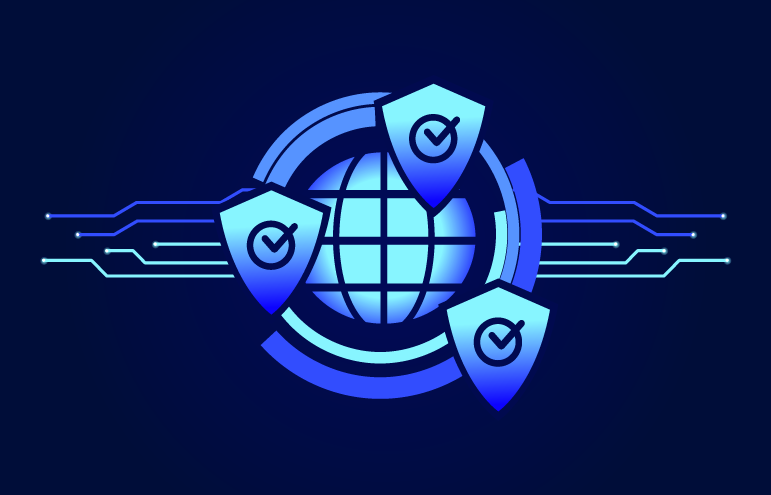3 Top Security Threats Financial Institutions Must Defend Against

Security remains one of the primary areas of concern for community banks and credit unions, according to our recent sentiment survey and based on responses, the top three security threats that keep survey respondents up at night are cybersecurity, information security and ransomware.
Here’s a synopsis of each of these security categories as well as some proven best practices that can help institutions address them:
#1: Cybersecurity
Cybersecurity is a broad area for financial institutions to truly master, especial smaller community banks and credit unions with fewer resources to devote to defending themselves – something that National Credit Union Administration Chairman Rodney Hood has even acknowledged.
In today’s world, cybersecurity threats are ubiquitous, with cyberattacks 300 times more likely to hit financial services firms than other companies, according to a recent Boston Consulting Group report. However, banks and credit unions can take advantage of a number of resources to strengthen their security efforts. Two valuable tools include the Cybersecurity Assessment Tool (CAT) from the Federal Financial Institutions Examination Council (FFIEC) and the Automated Cybersecurity Examination Tool (ACET) from the NCUA.
Institutions can also capitalize on the National Institute of Standards and Technology (NIST) Cybersecurity Framework to address cybersecurity issues. Not only can the Cybersecurity Framework help institutions properly evaluate their defensive capabilities, but it provides policies and procedures that can help them identify and even resolve security issues.
#2: Information Security
The goal of information security is to prevent electronic and physical data from unauthorized access, use, disclosure, disruption, modification, inspection, recording or destruction. More specifically, information security is a set of strategies for managing the processes, tools and policies that are necessary to defend data when it is being stored and transmitted between different machine or physical locations.
The three basic principles of information security are what are known as the “CIA” triad: Confidentiality, Integrity, and Availability. “Confidentiality” relates to being able to identify who is trying to access data and block attempts by unauthorized individuals. “Integrity” entails maintaining data in its correct state and preventing it from being improperly modified—either by accident or maliciously. “Availability,” like confidentiality, equates to ensuring data can only be accessed only by users with the proper permissions.
Today, institutions face a variety of threats to their data security, including breaches, malware, and deceptive phishing emails that trick victims into divulging their private information. These types of attacks can have a detrimental and long-lasting effect on companies, such as a loss of customers, reputation, revenues, and profits.
Financial institutions are common targets of malware, phishing scams, and data breaches. About 50 percent of all unique organizations impacted by “observed” phishing domains were from the financial services sector, according to Akamai Technologies’ 2019 State of the Internet/Security Financial Services Attack Economy Report.
As a defensive tactic, organizations should implement a layered approach to preventing information security threats. This means employing multiple security measures, policies, and procedures, from patch management to secure software development. However, people can be the first—and best—line of defense, so educating employees about potential cybersecurity threats is crucial.
#3: Ransomware
As the name implies, ransomware is malicious software that is designed to block access to a computer system until the victim pays a sum of money. The ransomware threatens to publish the data or deny access to it either temporarily or permanently.
Regardless of how the attack is initially perpetrated, ransomware presents a serious threat to all types of organizations. It typically begins when someone downloads a malicious email attachment or visits an infected website. The ruse is often undetectable, so most victims are not aware the data breach is happening—until it is too late. Unfortunately, ransomware is difficult to stop, and it can take a huge toll on consumers and organizations, causing frustration, disruption, data loss, and financial damage.
The problem with ransomware is that it is both widespread in nature and costly to address. And ransomware attacks—along with other cyber scams—began surging during the COVID-19 pandemic, according to the July 2020 McAfee COVID-19 Threat Report. A recent example is Ransomware-GVZ, which displays a note and demands payment in return for decrypting the company’s compromised computer systems and the data they contain.
Fortunately, there are actionable steps financial institutions can take to defend their data against ransomware attacks. Some of the most practical measures include keeping operating systems patched and maintaining up-to-date malware software to detect potential threats. Another good practice: keep files backed up, so the data can be replaced if a hacker ever holds it hostage. However, the time to implement defensive data security strategies is before a cyberattack happens.
For more insight about these top three security threats and best practices to defend against them, download our Top 10 Banking, Security, Technology and Compliance Concerns white paper.

